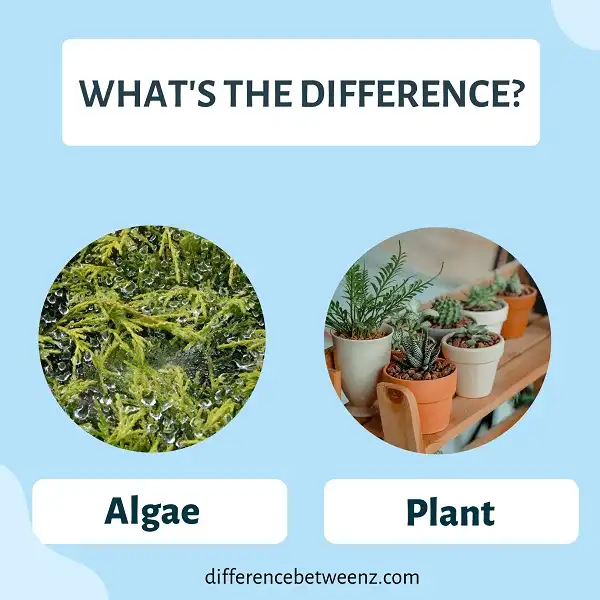Algae and plants are two very different organisms that have many differences. Algae is a photosynthetic, nonvascular organism that lacks roots, stems, and leaves. Plants are photosynthetic, vascular organisms with specialized tissue systems that transport water and nutrients throughout their bodies. This tutorial will explore the differences between algae and plants in more detail.
What is Algae?
Algae is a term used to describe a wide variety of plant-like organisms that range in size from single cells to huge kelp forests. Algae are found in moist environments all over the world and play an important role in the global ecosystem. They are often the primary producers in food webs, meaning that they convert sunlight into energy that is then used by other organisms.
Algae are also a major source of oxygen in the atmosphere and play a role in regulating the Earth’s climate. However, algae can also cause problems when they grow out of control and create harmful blooms that can damage ecosystems and negatively impact human health. Therefore, it is important to understand both the positive and negative aspects of algae in order to ensure that they are managed effectively.
What is Plant?
- The plant is a common name for an organism of the Plantae kingdom, which includes all multicellular eukaryotes that produce their own food through photosynthesis and have cell walls made of cellulose. Plantae is further divided into land plants, or embryophytes, which include bryophytes, pteridophytes, gymnosperms, and angiosperms; and green algae, or chlorophytes.
- Within Plantae, there are about 350,000 species of land plants, including mosses, liverworts, hornworts, lycophytes (club mosses), ferns, horsetails, and whisk ferns, seed plants (gymnosperms and angiosperms), and green algae. All land plants share some common features: cells with Walls made of cellulose; chloroplasts containing chlorophyll a and chlorophyll b; mitochondria; a vacuole; a cytoskeleton; and flagellated sperm used in sexual reproduction.
- Most land plants also go through a process called alternation of generations in which they produce two different types of gametophytes during their life cycle.
Difference between Algae and Plants
Algae and plants are both unique organisms that have several similarities, but there are also some significant differences between them. Algae are a type of aquatic plant that lacks true roots, stems, or leaves. Instead, they typically have a simple thallus or body, that is composed of cells. In contrast, plants are land-dwelling organisms that have a more complex structure, including roots, stems, and leaves.
Plants also contain chloroplasts, which enable them to perform photosynthesis. While algae do possess chloroplasts, they are not as efficient at photosynthesis as plants. As a result, algae generally grow much more quickly than plants. Finally, algae are typically much smaller than plants, with some species only being visible under a microscope.
Conclusion
Algae and plants are both photosynthetic organisms that produce oxygen, but there are some key differences between them. Algae can be single-celled or multicellular, while plants are always multicellular. Plants also have true roots, stems, and leaves, while algae do not. Finally, algae typically live in water, while plants can live on land or in water. Thanks for reading about the difference between algae and plants!


